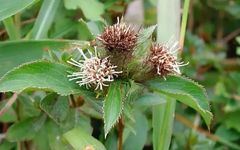Atractylodes
【Source】 This product is the dried rhizome of the Asteraceae plant Atractylodes lancea (Thunb.) DC. or Atractylodes chinensis (DC.) Koidz. Harvested in spring and autumn, the rhizomes are cleaned of soil, dried, and the fibrous roots are removed.
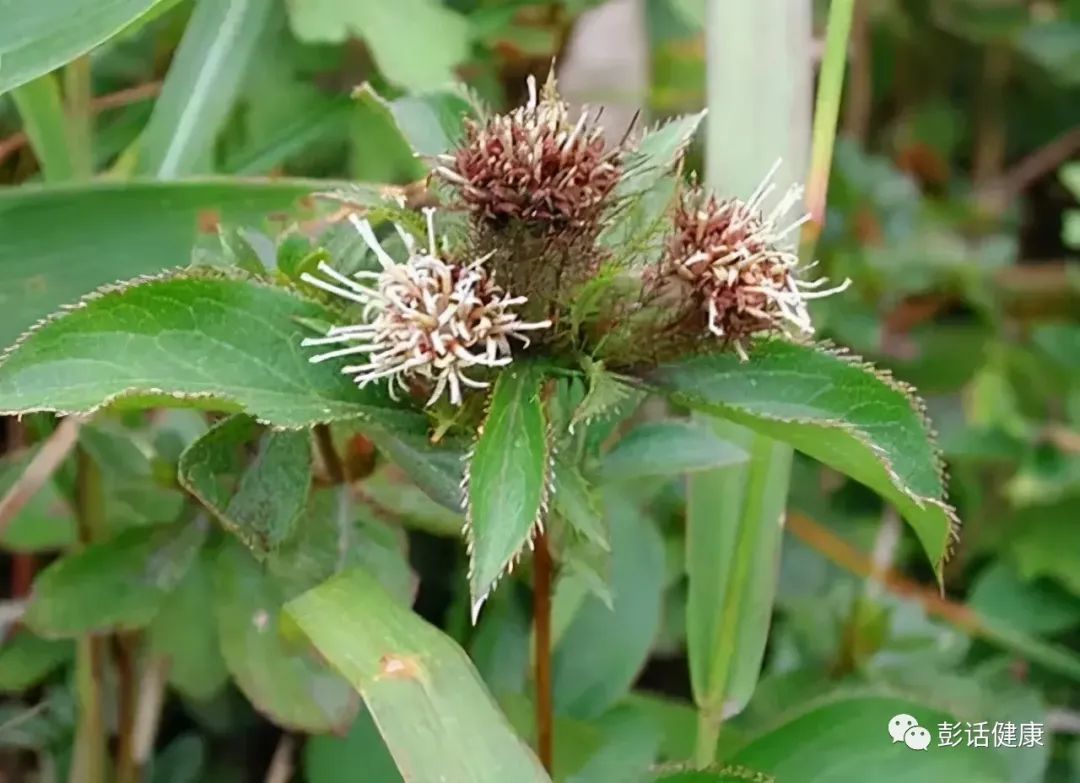
【Morphology】
1. Atractylodes lancea is a perennial herb. The rhizome runs horizontally with nodes. The stem is often ridged, 30-100 cm tall, unbranched or slightly branched at the top. The leaves are alternate, leathery; leaf blades are ovate-lanceolate to elliptical, 3-8 cm long, 1-3 cm wide, tapering to a point at the tip, gradually narrowing at the base, with larger central lobes that are ovate, serrated or with spiny teeth on the edges, dark green and glossy above, pale green below, with prominent veins, sessile, not divided, or the lower leaves are often bifid, with the lobes pointed, the larger lobe ovate, and the smaller lobes on both sides wedge-shaped, either sessile or petiolate. The capitulum is borne at the apex of the stem branches, with one row of leaf-like bracts, deeply lobed and spiny; the involucre is cylindrical, with 5-8 layers of bracts that are ovate to lanceolate and hairy; there are many flowers, with bisexual or unisexual flowers often on different plants; the corolla is tubular, white or slightly reddish, about 1 cm long, slightly swollen at the top, with 5 lobes that are strap-like; the bisexual flowers have many feathery lobes; the unisexual flowers are generally female, with 5 linear degenerate stamens that are slightly curled at the tip. The achene is obovate, covered with dense yellowish-white hairs. The flowering period is from August to October, and the fruiting period is from September to December.
2. Atractylodes chinensis differs from Atractylodes lancea in that its leaves are broader, ovate or long-ovate, generally with 5 deep lobes, and the upper leaves are 3-5 shallowly lobed or undivided, with irregular serrated edges, usually without petioles; the capitulum is slightly wider, with 5-6 layers of bracts that are broader than those of Atractylodes lancea; the degenerate stamens have rounded tips and are not curled. The flowering period is from July to August, and the fruiting period is from August to September.
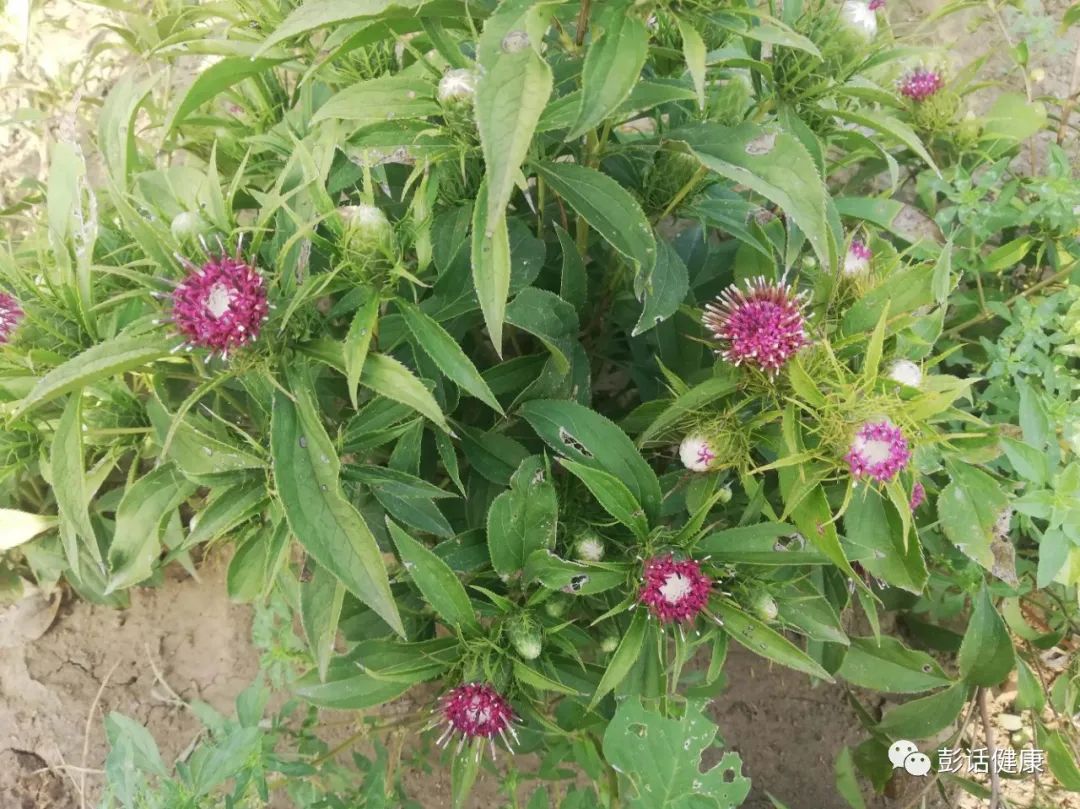
【Characteristics】 Atractylodes lancea appears irregularly bead-like or nodule-shaped cylindrical, slightly curved, occasionally branched, 3-10 cm long, 1-2 cm in diameter. The surface is gray-brown, with wrinkles, transverse grooves, and residual fibrous roots, with the apex having stem scars or remnants of the stem base. The texture is solid, with a cross-section that is yellow-white or gray-white, scattered with numerous orange-yellow or reddish-brown oil chambers, which can yield white needle-like crystals upon prolonged exposure. The aroma is distinctive, with a slightly sweet, spicy, and bitter taste.
Atractylodes chinensis appears as a nodule or nodule-shaped cylindrical, 4-9 cm long, 1-4 cm in diameter. The surface is black-brown, turning yellow-brown when the outer skin is removed. The texture is looser, with a cross-section scattered with yellow-brown oil chambers. The aroma is milder, with a spicy and bitter taste.
【Identification】 (1) The powder of this product is brown. Calcium oxalate needle crystals are small, 5-30 μm long, irregularly filling the parenchyma cells. Fibers are mostly bundled, elongated, with a diameter of about 40 μm, with very thick walls, lignified. Stone cells are numerous, sometimes connected with cork cells, polygonal, round, or rectangular, with a diameter of 20-80 μm, with extremely thick walls. Inulin is commonly seen, with a radial texture on the surface.
(2) Take 0.8 g of the powdered product, add 10 ml of methanol, sonicate for 15 minutes, filter, and take the filtrate as the test solution. Take 0.8 g of Atractylodes as a control herb and prepare the control solution in the same manner. Then take the Atractylodes lactone reference substance, dissolve it in methanol to prepare a solution containing 0.2 mg per 1 ml as the reference solution. Perform thin-layer chromatography (General Rule 0502) test, applying 6 μl of the test solution and control herb solution, and 2 μl of the reference solution on the same silica gel G thin-layer plate, using petroleum ether (60-90°C)-acetone (9:2) as the developing agent, develop, remove, dry, spray with 10% ethanol sulfuric acid solution, and heat until the spots are clearly visible. In the test solution chromatogram, spots of the same color appear at the corresponding positions as in the control herb chromatogram and reference solution chromatogram.
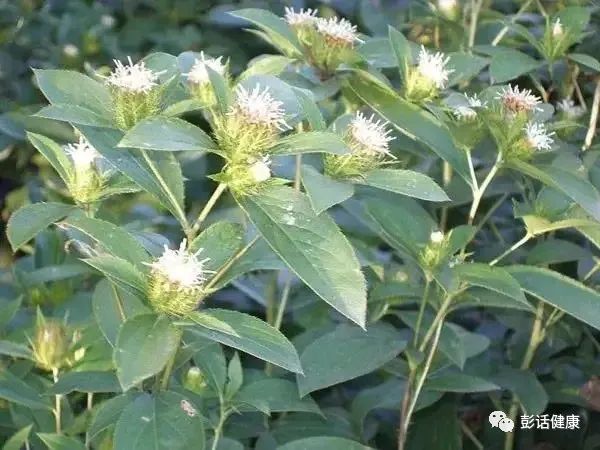
【Inspection】 Moisture must not exceed 13.0% (General Rule 0832, Method 4). Total Ash must not exceed 7.0% (General Rule 2302). 【Content Determination】 Operate in the dark. According to high-performance liquid chromatography (General Rule 0512) for determination. Chromatographic conditions and system suitability test use octadecylsilyl-bonded silica gel as the filler; use methanol-water (79:21) as the mobile phase; detection wavelength is 340 nm. Theoretical plate number calculated based on the Atractylodes lactone peak should not be less than 5000. Preparation of reference solution Take an appropriate amount of Atractylodes lactone reference substance, accurately weigh, and dissolve in methanol to prepare a solution containing 20 μg per 1 ml. Preparation of test solution Take about 0.2 g of the powdered product (passed through a No. 3 sieve), accurately weigh, place in a stoppered conical flask, accurately add 50 ml of methanol, seal tightly, weigh, sonicate (power 250W, frequency 40kHz) for 1 hour, cool, reweigh, and use methanol to make up for the weight loss, shake well, filter, and take the filtrate as the test solution. Determination method Accurately take 10 μl of the reference solution and test solution respectively, inject into the liquid chromatography instrument for measurement. The product, calculated on a dry basis, must contain not less than 0.30% of Atractylodes lactone (C13H10O).
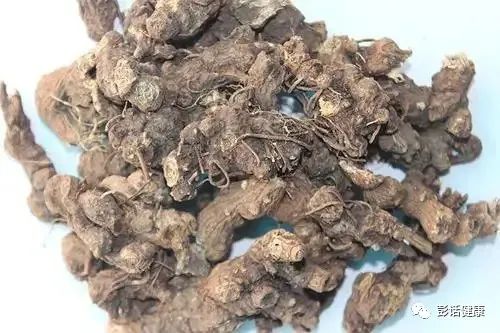
【Processing of Slices】 Atractylodes Remove impurities, wash clean, moisten thoroughly, cut into thick slices, and dry.
This product appears as irregular round or strip-shaped thick slices. The outer skin is gray-brown to yellow-brown, with wrinkles, and sometimes root scars can be seen. The cut surface is yellow-white or gray-white, scattered with numerous orange-yellow or reddish-brown oil chambers, some of which can yield white needle-like crystals. The aroma is distinctive, with a slightly sweet, spicy, and bitter taste.
【Inspection】 Moisture must not exceed 11.0% for the same herb.
Total Ash must not exceed 5.0% for the same herb.
【Identification】【Content Determination】 Same as the herb.
Fried Atractylodes Take Atractylodes slices, fry according to the method (General Rule 0213) until the surface is deep yellow.
This product resembles Atractylodes slices, with a deep yellow surface, scattered with numerous brownish-yellow oil chambers. It has a roasted aroma.
【Inspection】 Moisture must not exceed 10.0% for the same herb.
Total Ash must not exceed 5.0% for the same herb.
【Content Determination】 Same as the herb, containing not less than 0.20% of Atractylodes lactone (C13H10O).
【Identification】 (except for microscopic powder) same as the herb.
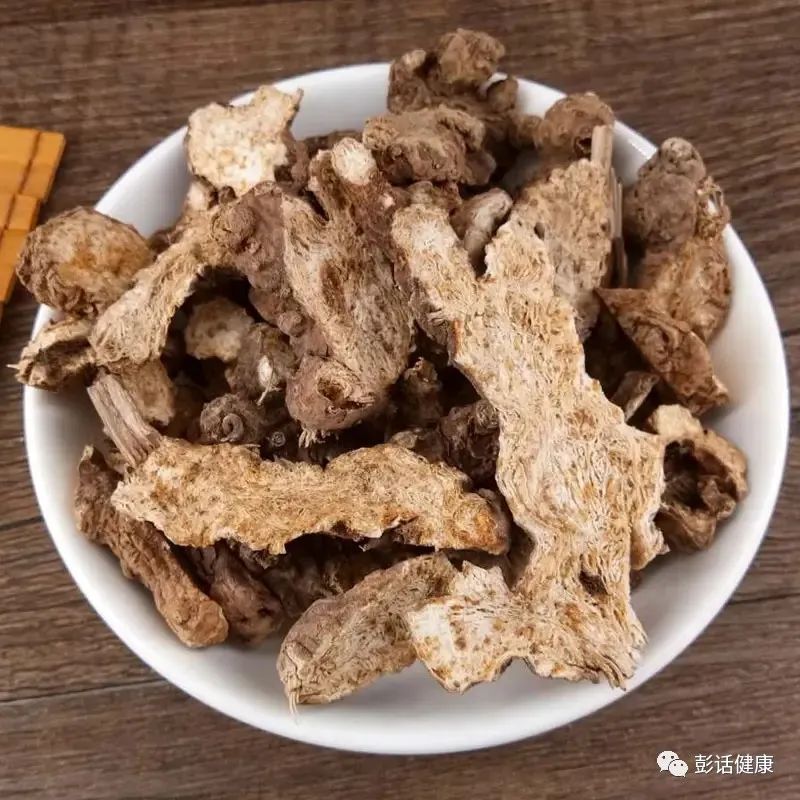
【Properties and Channels】 Pungent, bitter, warm. It enters the Spleen, Stomach, and Liver channels. 【Functions and Indications】 Dries dampness and strengthens the Spleen, dispels wind and scatters cold, brightens the eyes. Used for damp obstruction in the middle burner, abdominal distension, diarrhea, edema, beriberi, wind-damp bi pain, wind-cold common cold, night blindness, and blurred vision. 【Dosage】 3-9 g. 【Storage】 Store in a cool, dry place.
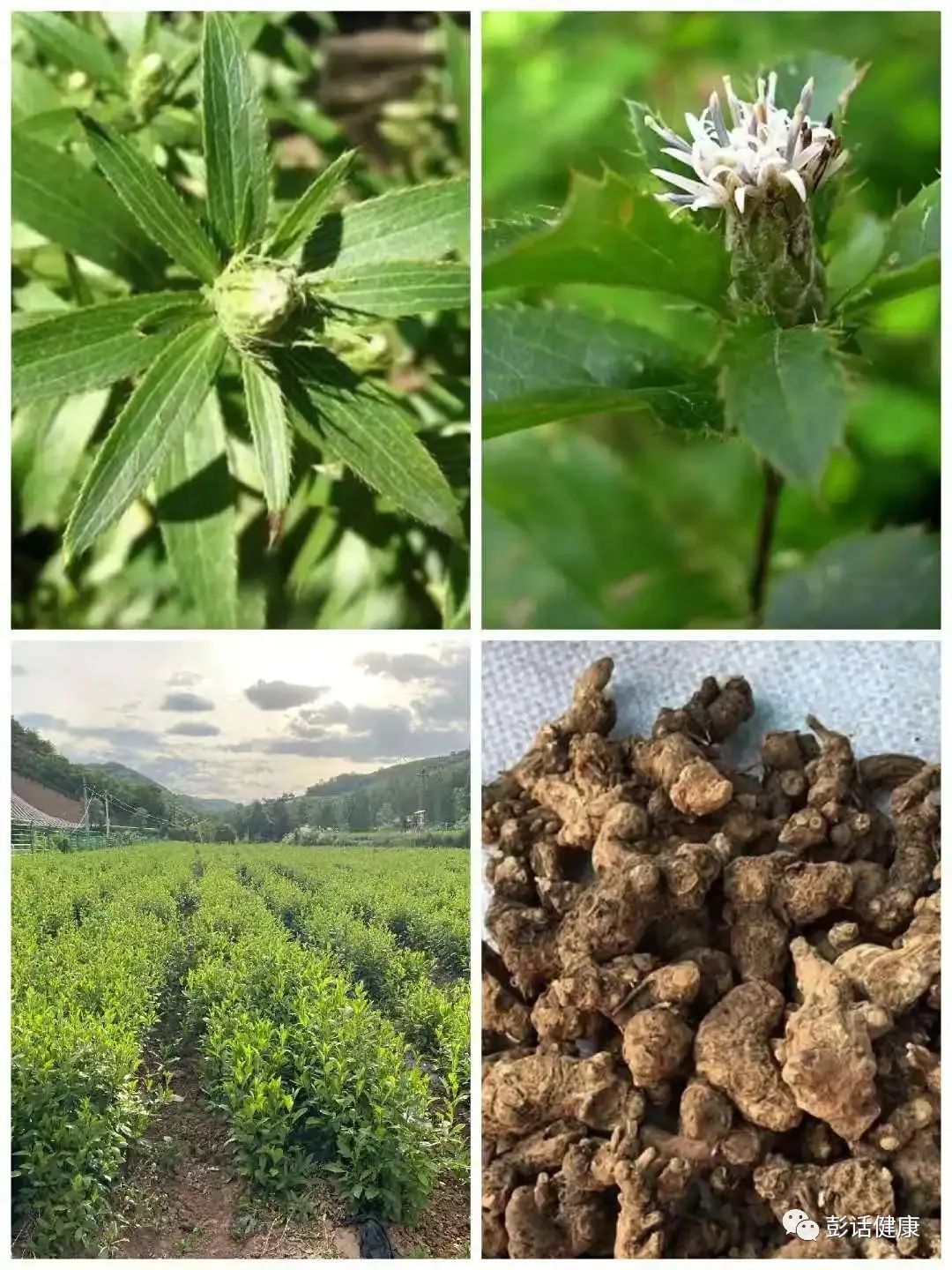
Excerpt from "Chinese Pharmacopoeia" and "Compendium of Materia Medica"
Please follow our public account!
Giving roses to others, the fragrance remains in your hand. Peng Hua Health wishes to exchange and learn about traditional Chinese medicine culture with everyone!

